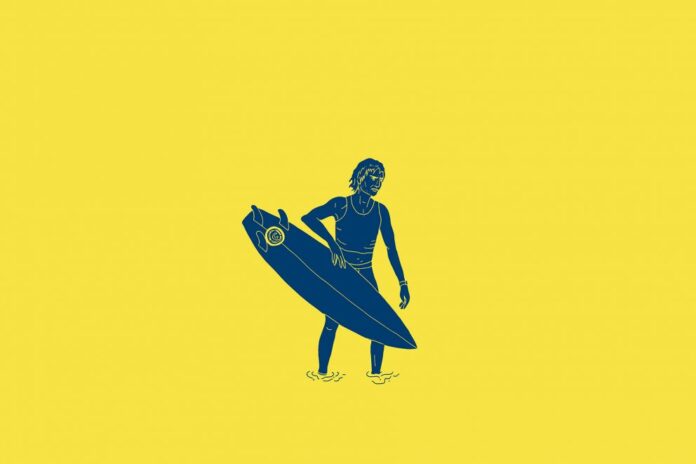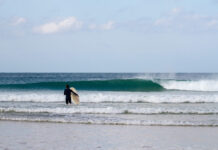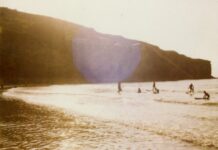Conceived in October 1980 after an encounter with fellow-shaper Frank Williams, Australian Simon Anderson created the Thruster in the beginning of 1981 by squaring-off the tail and adding a third/central fin to what was essentially a twin-fin surfboard. Nowadays ubiquitous in every line-up, the concept of a three-finned surfboard struggled to gain acceptance from a broader audience at first. But, as Anderson refined the design and later put it to a test in front of thousands of surfers at the 81’ Bells and Pipe Masters, the Thruster’s potential to push the limits of high-performance surfing became clear, and a new era in surfboard design and wave riding began.
The Historical Context
In the decade following 1967’s Shortboard Revolution, shortboards (now a distinct category from “longboards”) took the spotlight in terms of design developments and with them the never-ending quest for higher performance in wave riding continued. Progressive shapers like Dick Brewer and the Campbell brothers had worked on multi-fin models in the early 70’s, but without widespread success. As the end of the 70s approached, a division amongst the shortboard community had formed: surfers either advocated for “classic” single-fins or “more progressive” Mark Richards-style twin-fins.
Australian surfer Simon Anderson happened to be an advocate of the single-fin. However, due to his powerful physique and the fact that more small-wave surf venues were being added to the fledgling world tour circuit, he was also compelled to find alternative ways to get more out of his surfboards. Anderson’s friend and fellow-Narrabeen local, Frank Williams, had been experimenting with a stability-inducing third fin in the centre of his twin-fin board. Once Anderson caught sight of Williams’ board and understood the concept, he went ahead and shaped his own version of a tri-fin, which turned out to be the answer to his prayers.
In general, surfers of the time were sceptical about innovations – especially since both single and twin-fin models were readily available and functional. But when Anderson’s version of the three-fin setup proved itself in action, everyone wanted a piece of the pie. Less than two years after its inception, the Thruster (aka tri-fin) started to be reproduced across the globe.
Why Was This Development Necessary?
Much like Steve Lis and his Fish, when Simon Anderson created the thruster he simply intended to solve his own surf-needs – which were directly related to his body shape (6’3 and 200lbs) and powerful surfing style. Anderson disliked twin-fins for their susceptibility to slide off-track, and although a single-fin aficionado, he didn’t deem this fin setup to be suitable for the small-wave locations the world tour started to visit. Hence, Anderson’s tri-fin model aimed to provide the speed and manoeuvrability of a twin-fin (which were imperative for small-wave competitive surfing) but with extra stability in order to hold through harder and more powerful turns. Whilst his prime concern was to improve performance in small waves, Anderson also sought progression and saw in the Thruster a way to streamline surfing in general through the design’s capacity to maintain speed throughout turns, thus solving an issue many didn’t necessarily know to be there in the first place. In the end it was the boards performance at a maxed out Bells Beach that really sold the world on the design, with the twinfins unable to hold in the big surf, and the pin-tailed single fins only able to draw their long, classic lines, Simon Anderson was able to attack the wave in a way that no one else could come close to.





